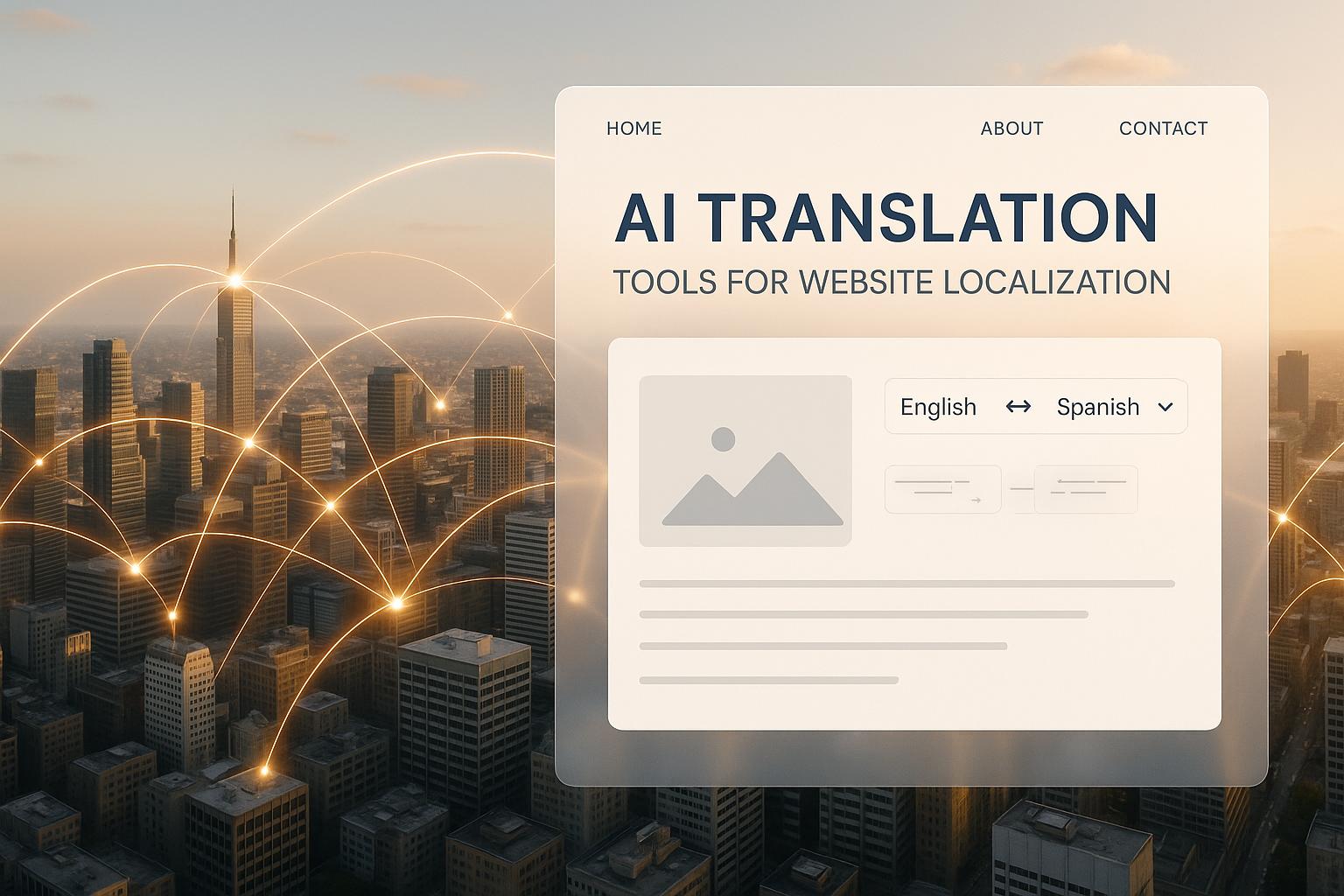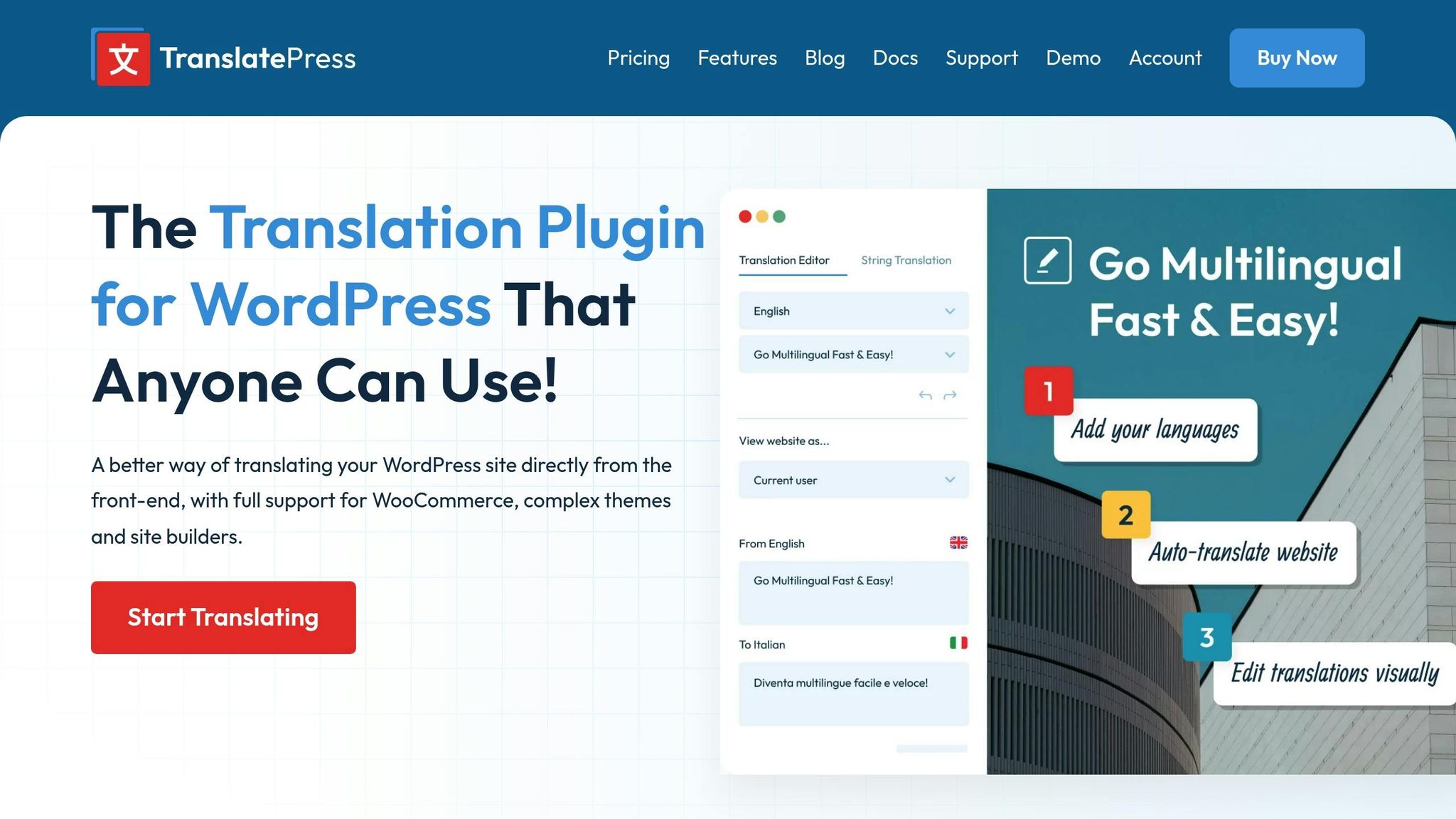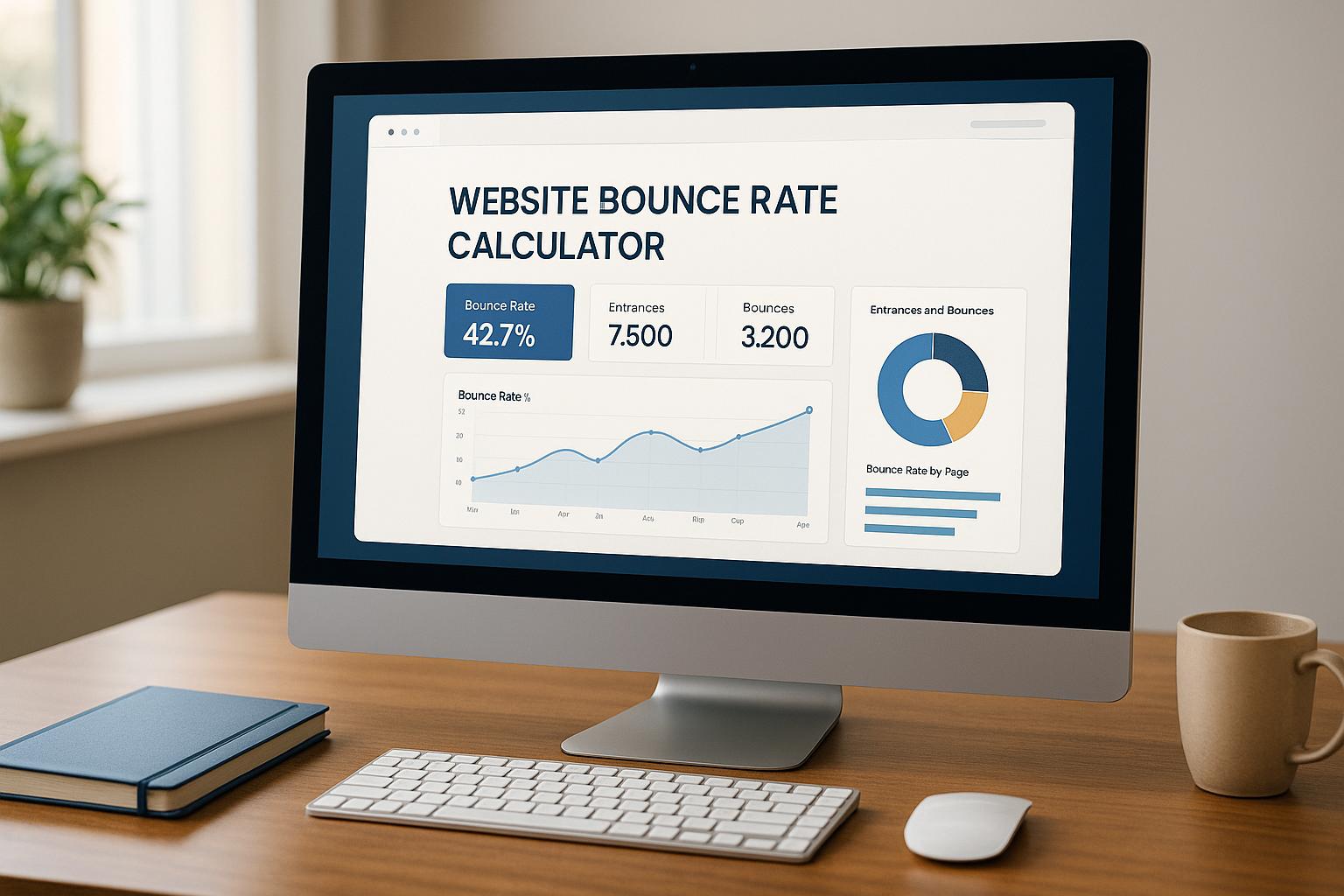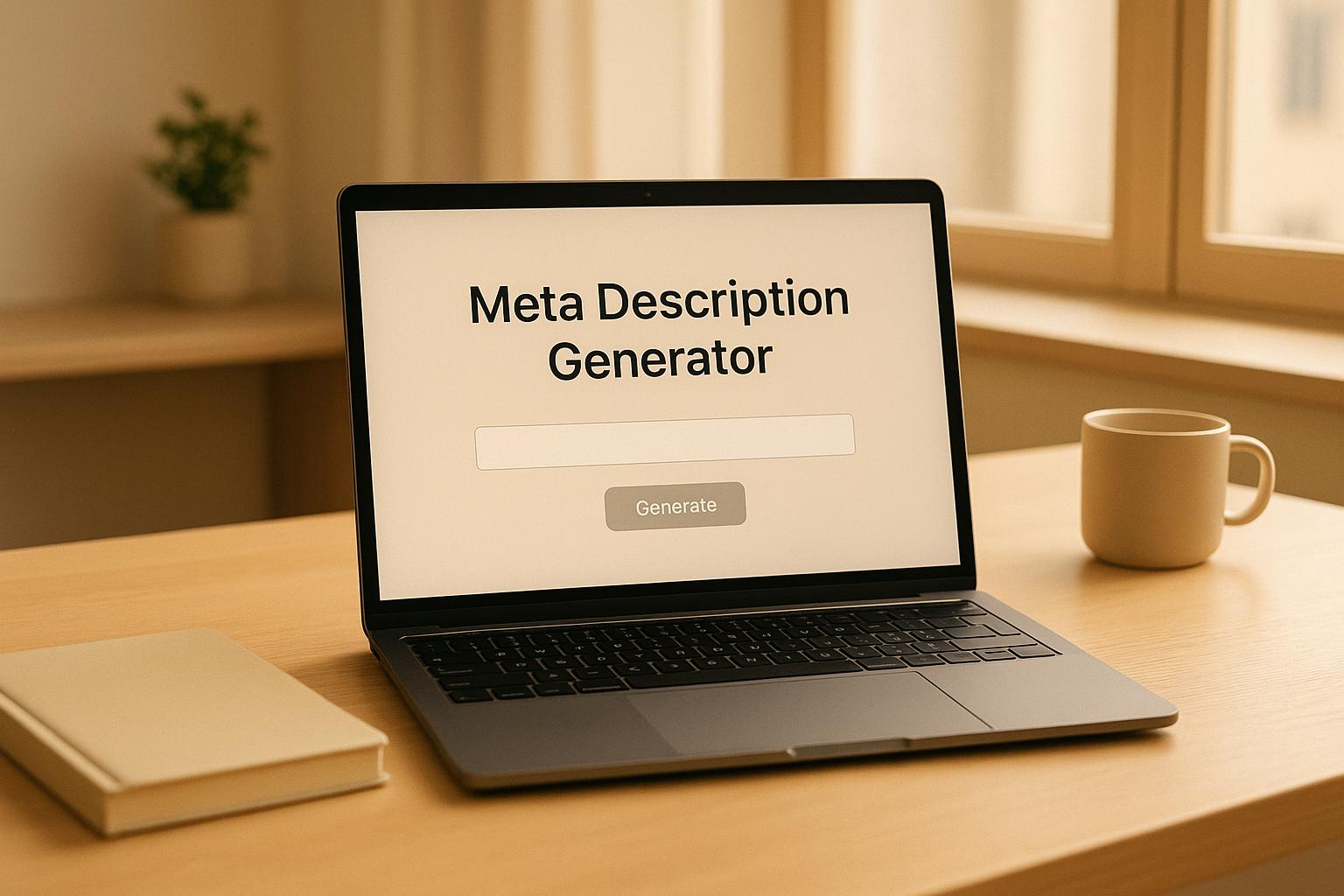

AI Translation Tools for Website Localization

AI Translation Tools for Website Localization
 25-10-2025 (Last modified: 27-10-2025)
25-10-2025 (Last modified: 27-10-2025)
AI translation tools are transforming website localization by making it faster, cheaper, and more accurate. Businesses can now reach global audiences without the high costs and delays of manual processes. These tools handle translation, maintain consistency, and even adjust for local preferences like currencies, date formats, and tone.
Key Takeaways:
- What is Website Localization? It’s more than translation; it adapts websites for specific regions, including language, visuals, and formats (e.g., USD to EUR, MM/DD/YYYY to DD.MM.YYYY).
- Why It Matters: Localization builds trust, boosts sales, and improves SEO by making content feel tailored to specific audiences.
- AI’s Role: AI tools like DeepL and Transifex speed up translation, reduce costs, and improve consistency while learning and improving over time.
- Challenges Solved by AI: AI addresses high costs, long timelines, translation inconsistencies, and difficulty maintaining local relevance.
- Best Practices: Combine AI with human review for accuracy, use automation tools like glossaries and translation memory, and choose platforms with integration and scalability features.
AI localization tools are reshaping how businesses expand globally, enabling faster, more reliable, and cost-effective solutions for connecting with international audiences.
Turn Your Website Multilingual In A Few Clicks with AI! Automatic AI Translation with TranslatePress

Problems with Manual Website Localization
Traditional human-driven localization methods come with a host of challenges that can slow down or complicate global expansion efforts. These challenges have paved the way for AI-powered alternatives to step in.
High Costs and Long Timelines
Manual website localization can quickly become a financial burden. Hiring professional translators, localization specialists, project managers, and quality assurance teams for every language and region adds up, especially as the need to scale content for multiple markets grows. Unlike AI solutions, which allow for scalable translations after an initial setup, manual localization demands more human resources as the volume of content increases.
On top of that, the process is time-consuming. Each translation must go through multiple steps – translation, review, and approval – before it’s ready. This slows down market entry, which can be a big problem for industries like e-commerce, gaming, and tech, where content needs to be updated frequently to stay relevant. These delays can make it harder for businesses to respond quickly to market demands, limiting growth opportunities.
Translation Inconsistencies
Ensuring consistent terminology and maintaining a cohesive brand voice is another hurdle with manual localization. Individual translators often have different skill levels and interpretations, leading to inconsistencies across various types of content, such as technical guides, legal documents, or user interfaces. Without a centralized glossary to manage key terms, translators may inadvertently use different words or phrases for the same concept, resulting in “terminology drift.”
Even when glossaries are used, they require constant manual updates – a tedious, error-prone task. These inconsistencies often go unnoticed until late in the process or, worse, after the content is published, leading to costly revisions.
Maintaining Local Relevance
Cultural accuracy is another critical aspect of localization. It’s not just about translating words; it’s about adapting content to fit the cultural context of each market. This includes adjusting humor, imagery, currency formats, date styles, and tone to align with local preferences. However, human translators often miss subtle cultural nuances, resulting in translations that, while technically accurate, fail to resonate with the target audience.
Benefits of AI-Powered Translation Tools
AI-powered translation tools are reshaping the localization landscape by tackling the challenges of high costs, delays, and inconsistencies often associated with manual processes. These tools enable businesses to expand globally with greater speed, reduced expenses, and reliable quality.
Speed and Scalability
Neural machine translation (NMT) can process thousands of words in mere minutes, cutting down timelines that once stretched into weeks. This efficiency means businesses can enter new markets faster and update content in near real-time. Unlike traditional methods that require assembling teams of translators for every project, AI tools handle large volumes of content effortlessly.
This scalability is especially advantageous when targeting multiple markets at once. AI systems can translate websites, product descriptions, and marketing materials into dozens of languages simultaneously. This eliminates the bottleneck of finding qualified translators for each language, which is particularly helpful for fast-moving industries like e-commerce and technology, where content – like pricing, promotions, and product details – changes frequently.
In 2023, Celonis leveraged Transifex’s AI-powered localization platform, achieving a 70% reduction in translation times. This halved their time to market and increased localized course completions by five times, driving global engagement and product adoption.
Modern AI platforms also support real-time content updates. For instance, if you adjust a product price or launch a new feature, these changes can be reflected across all localized versions within hours. This capability ensures that critical updates – such as regulatory changes or time-sensitive promotions – reach international audiences without delay. By streamlining these processes, AI tools not only speed up market entry but also set the stage for significant cost savings.
Lower Costs
AI tools don’t just save time – they also dramatically reduce costs. By automating much of the translation workflow, businesses can cut localization expenses by more than 60% compared to traditional methods. While the upfront investment in AI platforms might seem high, the cost per translated word drops significantly as the volume of content increases.
Traditional localization often involves hiring multiple translators and project managers for each language. AI tools simplify this by automating tasks like workflow management, applying translation memory, and performing initial quality checks. This reduces the need for large teams, allowing human experts to focus on tasks that require cultural adaptation or creative input.
Another advantage is predictable pricing. Instead of fluctuating costs based on translator availability or project complexity, many AI platforms charge consistent monthly or annual fees. This makes financial planning much easier for businesses.
Consistency and Quality Control
AI systems use translation memories and terminology databases to maintain consistency across all content types and languages. This ensures that brand-specific terms and phrases remain uniform, whether they’re used in technical documentation, marketing campaigns, or user interfaces. Unlike human translators, who might interpret terms differently, AI tools deliver a consistent voice and message.
These systems are particularly effective at preserving brand identity. By learning from approved translations, AI tools ensure product names, technical details, and key terms are used correctly across all markets. This helps safeguard brand integrity and reinforces trust with global audiences.
Quality control is another area where AI tools shine. They systematically flag potential issues like untranslated text, formatting errors, or culturally insensitive content before it goes live. For US-specific audiences, AI platforms automatically adjust currencies, dates, and measurements to align with local standards.
Automated quality assurance also catches common mistakes – such as broken links or missing translations – that could harm the user experience. Unlike human reviewers, who might miss these errors under tight deadlines, AI tools provide a thorough and reliable review process.
As AI systems process more content and receive feedback, they continuously improve. Over time, they become better at interpreting context, understanding industry-specific jargon, and addressing cultural nuances for each target market. This ongoing learning enhances translation quality, ensuring businesses can communicate effectively with their global audience.
sbb-itb-6e49fcd
Best Practices for Using AI Translation Tools
To make the most of AI-powered localization, it’s important to combine strategic tool selection, human input, and automation. These best practices will help you fully utilize the potential of AI translation tools.
Selecting the Right AI Translation Tool
Choosing the right AI translation platform is the first step in creating effective localized content. Start by evaluating language support – does the tool excel in translating the languages of your target markets? Some platforms are strong in European languages but may fall short with Asian ones, while others offer broader language coverage with varying quality.
Next, consider integration capabilities. Tools like Transifex and Weglot provide CMS plugins that allow for direct localization, eliminating the need for manual export, translation, and import processes. This can save time and reduce errors.
Visual context tools are another critical feature, especially for websites. These tools let you preview how translations will look on your site, helping you catch formatting issues before they go live. For example, languages with longer word lengths can disrupt layouts, and visual previews make it easier to adjust accordingly.
Finally, think about scalability and automation. As your content grows, features like translation memory, glossaries, and quality assurance tools become essential. They help maintain consistency across projects and minimize repetitive tasks. For US-based companies expanding globally, look for tools that handle currency formatting ($1,000.00), date formats (MM/DD/YYYY), and unit conversions automatically.
Adding Human Review
While AI translation is fast and consistent, human oversight is still essential for ensuring accuracy and cultural relevance. A structured review process that combines AI efficiency with human expertise can greatly enhance the quality of your localized content.
Engage native experts to review AI translations at critical checkpoints. This is particularly important for marketing materials, legal documents, and culturally sensitive content. Human reviewers can catch nuances, idiomatic expressions, and cultural subtleties that AI might miss, ensuring your message resonates with local audiences.
Collaborative platforms can make this process smoother by allowing real-time feedback and side-by-side comparisons of AI-generated and human-edited translations. Translation Management Systems (TMS) can track changes, maintain version control, and enable multiple reviewers to work on different sections simultaneously.
Focus human review efforts on high-priority content like product descriptions, calls-to-action, and landing pages. These areas have a direct impact on user engagement and conversions, so they deserve more attention compared to technical documentation or FAQs.
Additionally, establish feedback loops to improve future translations. When reviewers make corrections, update glossaries and style guides accordingly. This helps the AI system learn from past mistakes, reducing the need for extensive human involvement over time.
Using Automation Features
Automation features like translation memory and glossaries are key to maintaining consistency and reusing validated content. Translation memory ensures uniform terminology across your site, while glossaries standardize brand-specific language, technical terms, and product names. For example, an e-commerce site can use these tools to keep product categories, shipping terms, and promotional language consistent across all markets. Consider creating separate glossaries for different content types – marketing materials may require more creative language, while technical content needs precision.
Automated quality checks are another valuable tool. These systems can flag untranslated text, formatting errors, broken links, and missing translations before publication. Unlike human reviewers who may be working under tight deadlines, AI tools provide thorough and consistent checks every time.
Set up real-time content synchronization to ensure all localized versions stay up to date. Whether you’re updating pricing, launching new features, or addressing regulatory changes, automation can push these updates across all markets within hours instead of weeks.
For even greater efficiency, use API integrations to automate workflows. For instance, you can trigger translations whenever new content is published, sync updates across platforms, and even integrate with tools like PageTest.AI to test localized headlines, calls-to-action, and product descriptions for better performance in different markets. This approach aligns performance testing with localization updates, turning what was once a manual bottleneck into a seamless part of your content strategy.
Keep an eye on performance metrics to strike the right balance between automation and human review. By doing so, you can refine your localization process and deliver high-quality content to global audiences.
Future of AI in Website Localization
The world of AI-driven website localization is advancing at a remarkable pace, with new technologies reshaping how businesses connect with global audiences. These innovations go beyond simple translation, offering localized experiences that resonate on a deeper level.
New Technologies in AI Localization
One of the standout advancements is Neural Machine Translation (NMT). By harnessing deep neural networks and region-specific data, NMT delivers translations that feel natural, capturing context, grammar, and local nuances.
Another key development is the introduction of quality control mechanisms designed to catch errors and prevent awkward or incorrect translations. AI is also making strides in multimedia localization, where it generates synthetic voiceovers and subtitles in multiple languages. What’s impressive is its ability to maintain the original tone and emotion of the content.
Additionally, predictive analytics is becoming a game-changer. By analyzing user behavior and feedback across different regions, these tools help refine future translations, ensuring they align more closely with audience expectations. Together, these advancements are redefining what’s possible in global communication.
Expanding Global Reach with AI
Thanks to these innovations, AI localization is now enabling businesses to scale their operations across multiple regions faster than ever. This speed not only shortens time-to-market but also reduces costs significantly. By automating large-scale localization efforts, companies can reach international audiences more efficiently while improving conversion rates.
E-commerce businesses, for example, are already leveraging AI to translate product descriptions and marketing materials for dozens of markets. The result? Higher customer satisfaction and better sales performance. Real-time localization also allows businesses to quickly adapt content – whether it’s updating prices to reflect currency changes, complying with new regulations, or launching time-sensitive campaigns.
For companies targeting diverse markets, including the US, AI localization offers even more possibilities. Tools like PageTest.AI work alongside localization efforts by testing and optimizing website elements – headlines, calls-to-action, and product descriptions – with AI-generated alternatives. Tracking metrics like clicks and engagement ensures that localized content doesn’t just translate well but also aligns with local preferences, such as US-specific formatting for currency ($1,000.00) and dates (MM/DD/YYYY).
Modern AI systems also improve over time. By learning from user interactions and feedback across regions, these tools continuously refine their translations. This creates a feedback loop that enhances localization quality with each iteration. As AI localization becomes more accessible, even smaller businesses can compete globally with content that feels genuinely tailored to local audiences.
Conclusion
AI translation tools have reshaped website localization, replacing hefty costs and prolonged timelines with efficient, scalable solutions. Take one enterprise, for instance, which managed to reduce translation times by 70% and cut its time-to-market in half. These advancements not only save money but also simplify processes. In fact, AI tools can reduce localization costs by up to 50%. They tackle long-standing challenges in global expansion, such as inconsistent messaging across regions, extended project timelines, and the difficulty of maintaining relevance across different markets. By automating repetitive tasks and using translation memories to ensure consistent terminology, these tools provide the speed and reliability that modern businesses need to thrive internationally.
What’s more, AI localization evolves with use. By learning from feedback, it continuously improves translation quality, adapting to changes in language and regional nuances. This means that with each iteration, your localization efforts grow stronger, giving you a compounding advantage over time. These dynamic improvements pave the way for sustained success on a global scale.
However, while AI translation tools lay a solid foundation for global growth, achieving success also requires strategic refinement. Platforms like PageTest.AI can complement these tools by fine-tuning localized content. They ensure that everything – from headlines to calls-to-action – resonates with local audiences, helping your translated content not just communicate effectively but also drive conversions in every market.
In a fast-paced world, businesses that adapt quickly to local preferences while maintaining consistent branding will lead the way. AI localization tools make this a reality, turning the complexities of international expansion into streamlined, automated workflows. As technologies like neural machine translation and predictive analytics continue to evolve, the ability to connect with global audiences through authentic and engaging content has never been more within reach.
FAQs
How do AI translation tools maintain cultural relevance and ensure accurate localization for different markets?
AI translation tools excel at delivering precise and context-aware translations by employing advanced natural language processing (NLP) and machine learning techniques. They go beyond just converting words – they delve into cultural subtleties, idiomatic phrases, and region-specific preferences to craft translations that resonate with the intended audience.
To further enhance quality, many of these systems integrate feedback mechanisms and involve human experts in the process. Professional linguists often step in to review and fine-tune translations, ensuring the output aligns with local traditions, values, and expectations – all while preserving the original message’s intent.
What should I look for in an AI translation tool for effective website localization?
When selecting an AI translation tool for website localization, prioritize its capacity to deliver precise translations that resonate with the cultural context of your audience. The tool should effectively address regional details like currency formats, date and time styles, and local spelling conventions to ensure the content feels natural and relatable.
It’s also worth exploring platforms that incorporate AI-powered content optimization. These tools can fine-tune elements like headlines and calls-to-action (CTAs) to boost engagement. To evaluate the success of your localized content, track metrics such as clicks, user behavior, and time spent on the page. This data can guide you in making informed adjustments to improve performance.
How can businesses use AI translation tools and human expertise to improve website localization?
To make website localization more effective, businesses can leverage the efficiency of AI translation tools alongside the nuanced understanding that human expertise provides. AI tools excel at quickly creating multiple content versions, while human reviewers step in to ensure the translations reflect local preferences and cultural subtleties.
For instance, AI can handle tasks like generating variations for headlines or crafting calls-to-action. Then, human experts can fine-tune these elements, ensuring they connect more deeply with the intended audience. This combination of speed and human insight strikes a balance between efficiency and delivering high-quality localized content.
Related Blog Posts
say hello to easy Content Testing
try PageTest.AI tool for free
Start making the most of your websites traffic and optimize your content and CTAs.
Related Posts

 11-12-2025
11-12-2025
 Ian Naylor
Ian Naylor
Website Bounce Rate Calculator
Calculate your website’s bounce rate instantly with our free tool. Enter visitor data to see how your site performs and get actionable insights!

 09-12-2025
09-12-2025
 Ian Naylor
Ian Naylor
Meta Description Generator for SEO Success
Create perfect meta descriptions with our free generator! Input your keyword and content summary for SEO-friendly results in seconds.

 08-12-2025
08-12-2025
 Ian Naylor
Ian Naylor
Color Contrast Checker for Accessibility
Ensure your website is accessible with our Color Contrast Checker. Test color combos for WCAG compliance and get instant feedback!
